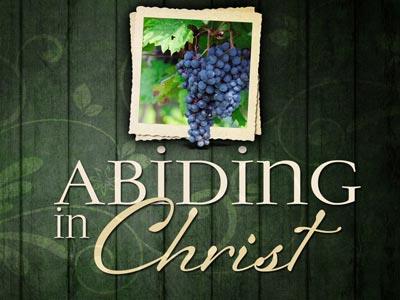-
Lesson 3: God Revealed Through The Pattern Of The Incarnation Series
Contributed by Joshua Blackmon on Jul 2, 2025 (message contributor)
Summary: Exploring the Communicable Attributes of God Through the Mystery of Christ’s Descent, Nature, and Redemption
Lesson 3: God Revealed Through the Pattern of the Incarnation
Exploring the Communicable Attributes of God Through the Mystery of Christ’s Descent, Nature, and Redemption
John 1:1-3,14
In the beginning was the Word, and the Word was with God, and the Word was God. 2 He was with God in the beginning. 3 All things were created through him, and apart from him not one thing was created that has been created... The Word became flesh and dwelt among us. We observed his glory, the glory as the one and only Son from the Father, full of grace and truth.
Colossians 1:17
He is before all things, and by him all things hold together.
Philippians 2:5-11
5 Adopt the same attitude as that of Christ Jesus,
6 who, existing in the form of God,
did not consider equality with God
as something to be exploited.[a]
7 Instead he emptied himself
by assuming the form of a servant,
taking on the likeness of humanity.
And when he had come as a man,
8 he humbled himself by becoming obedient
to the point of death—
even to death on a cross.
9 For this reason God highly exalted him
and gave him the name
that is above every name,
10 so that at the name of Jesus
every knee will bow—
in heaven and on earth
and under the earth—
11 and every tongue will confess
that Jesus Christ is Lord,
to the glory of God the Father.
Introduction: Love Illuminating All
The Incarnation of Jesus Christ is the Grand Miracle—not just a surprising event in redemptive history but the pattern that illumines the entire cosmos. As C.S. Lewis noted, the Incarnation gives us a new light in which to see everything else. Boyer and Hall, in their book "The Mystery of God: Theology of Knowing the Unknowable," expand this insight to reveal how the Incarnation reflects the structures of the natural world while also redeeming them. This lesson explores how the communicable attributes of God—particularly love, wisdom, faithfulness, and justice—are seen through the patterns of descent, ascent, and vicariousness revealed in Christ.
1. The Mystery of Composite Life: Body and Spirit as a Pattern of the Divine
Genesis 2:7
Then the LORD God formed the man out of the dust from the ground and breathed the breath of life into his nostrils, and the man became a living being.
James 2:26
For just as the body without the spirit is dead, so also faith without works is dead.
“Each of us is an outlandish union of spiritual and corporeal, of rational and nonrational, one might almost say of supernatural and natural.”
We are composite beings—soul/spirit [whatever term you use to refer to the immaterial part of who we are] and body united. To be completely human is to be an embodied person. We are more than the sum of our parts. This “odd linkage” is not unlike the mystery of the Incarnation itself. As Boyer and Hall write:
“Each of us is an outlandish union of spiritual and corporeal, of rational and nonrational, one might almost say of supernatural and natural. This union is baffling enough that philosophers continue to puzzle over the so-called mind-body problem... But then, says Lewis, we notice that the incarnation is not the first or the only place where existence is not the sheer anomaly it might seem to be, but a faint image of the Divine Incarnation itself—the same theme in a very minor key.”
This means that our composite nature, far from being a problem to solve, is a pointer to the deeper reality of Christ. In the Incarnation, we see the fullest union of God and man, Spirit and flesh.
2. The Pattern of Descent and Reascent: A Universe That Follows Christ (Philippians 2:5-11)
“From every angle, this kind of colossal descent is almost unfathomable... And it is matched on the other side by an equally colossal ascent.”
Jesus’ descent—from divine glory to embryo, peasant, criminal, and corpse—is the most astonishing story ever told. And yet, says Lewis, it is echoed everywhere. The natural world follows the same rhythm:
“It is there in vegetable life... in animal life... in human emotional and moral life... At all of these points, it seems that the universe follows this pattern of death and rebirth, of descent and reascent. It is as though the incarnation has shown us the archetypal original of which all kinds of common experiences are copies.”
Nature testifies to this cruciform pattern. All growth comes through death. All maturity follows surrender. In Christ, we do not just see a miracle—we see the blueprint.
3. The Mystery of Election: God’s Particular Love and Universal Mercy
“God becomes not just any man but a very particular man...”
The scandal of particularity is not a defect in divine love but its very mode. Boyer and Hall remind us that election is everywhere in nature—and grace:

 Sermon Central
Sermon Central



